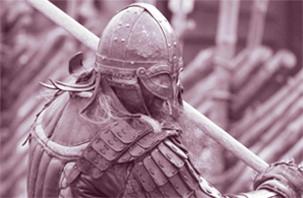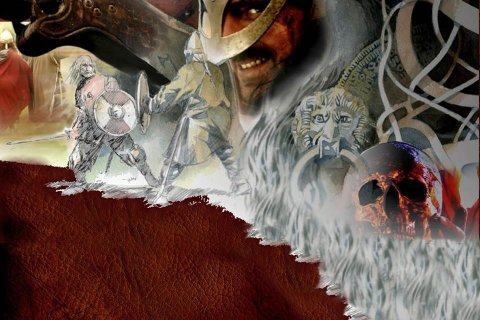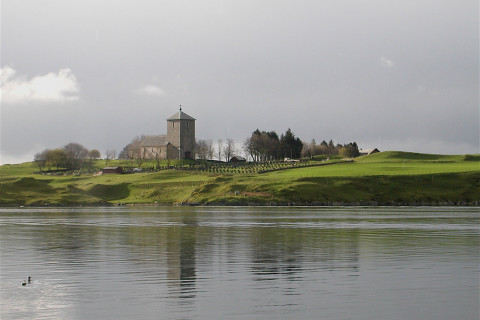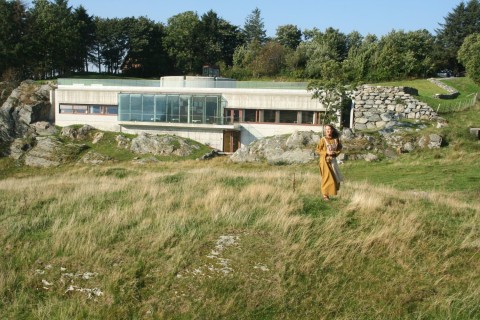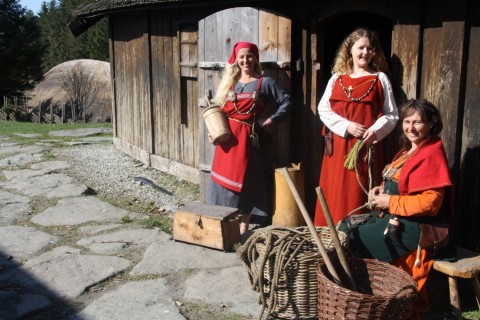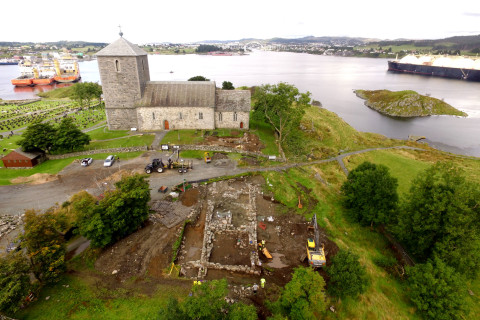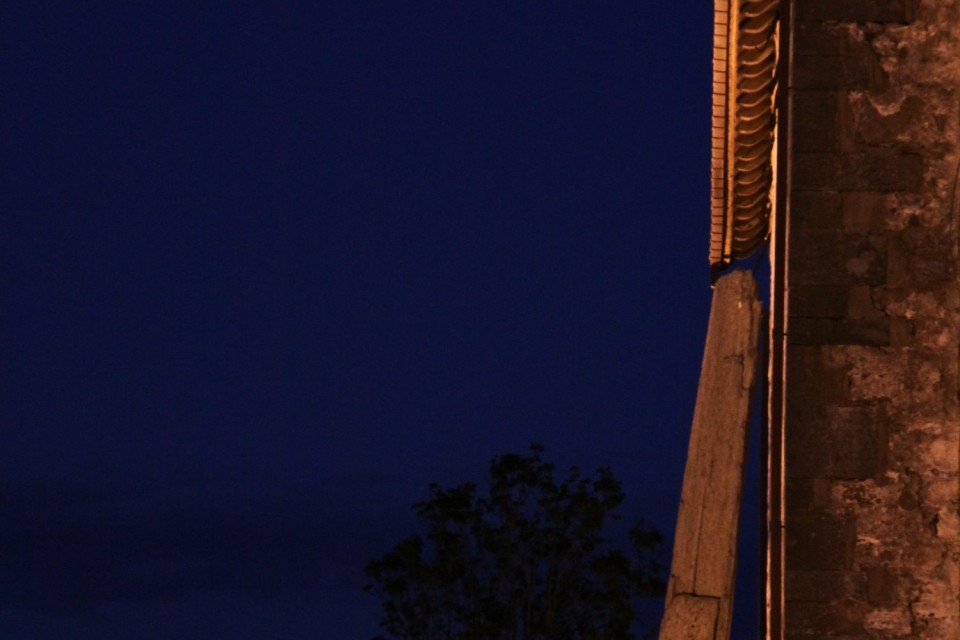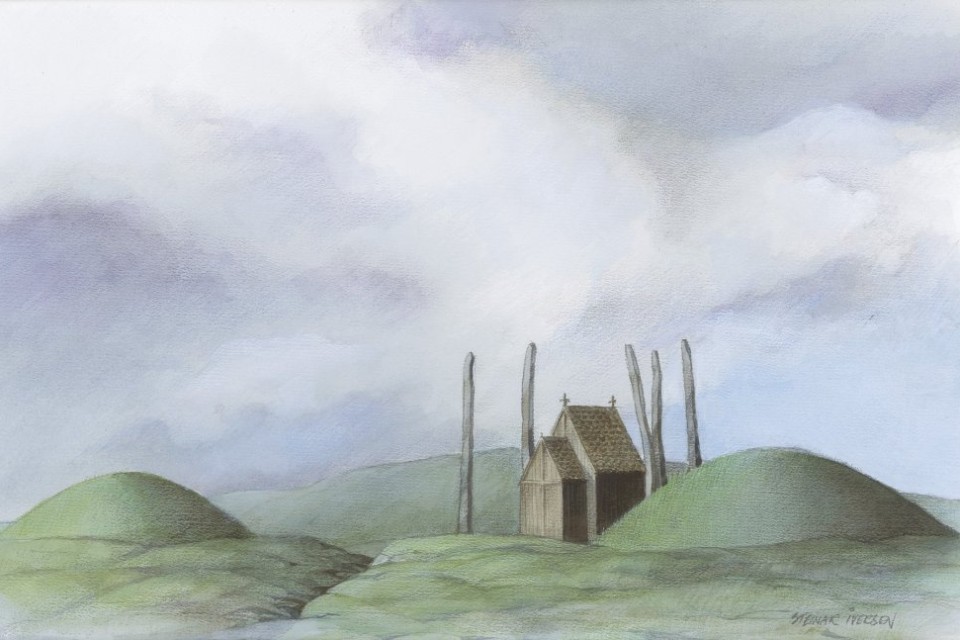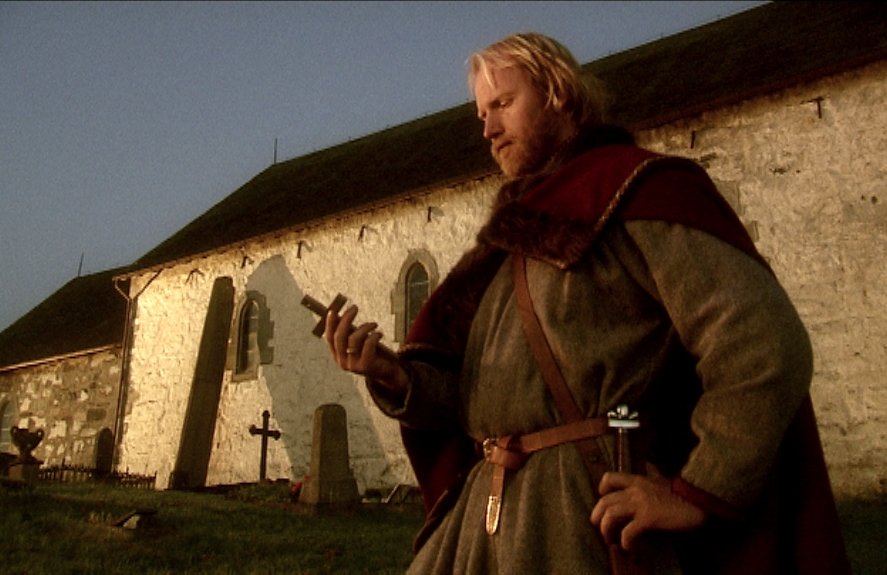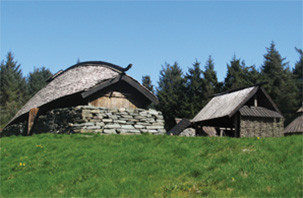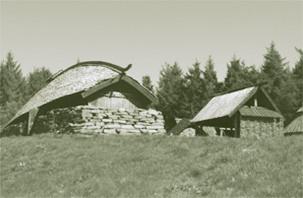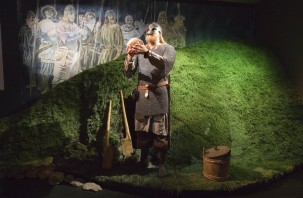Virgin Mary’s Sewing Needle
Text: Marit Synnøve Vea
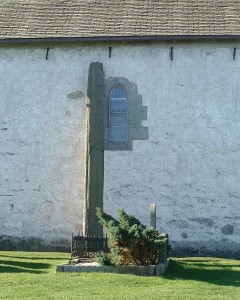
Virgin Mary’s Sewing needle. We estimate that 2/3 of the stone is above the soil, 1/3 below. (Photo Marit Synnøve Vea)
On the north side of the church stands the Virgin Mary’s Sewing Needle which looks as if it is leaning against the church wall. Measuring 7.2 metres it is one of Norway’s tallest standing stones, but it has been even higher.
Old legends tell us that doomsday will come when the stone touches the church wall, so in times gone by priests at Avaldsnes, under cover of darkness, have climbed up the stone and chipped pieces from the top, thus saving the world from destruction.
The name of the stone comes from a runic inscription “Mikjall Maria næstr” which means Michael the next after Mary. This we can interpret as showing that the pagan cultures have been “Christianised” and given a place in St Michael’s culture.
The doomsday legend can be traced back to this time as Michael was known as the angel who would sound a horn to signal the end of the world.
Originally Virgin Mary’s Sewing Needle was one of five huge standing stones that were erected at Avaldsnes, probably in the 3rd Century AD. These stones constituted a sacred place of heathen cult. Today, Virgin Mary’s Sewing Needle is the only one that stands on its original place.
The first church at Avaldsnes was probably built by King Olav Tryggvason sometimes between 995 – 1000. According to tradition he built his small wooden church in the midst of the sacred place of heathen cult.
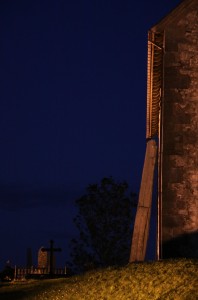
Today the gap between the Doomsday stone and the Church wall is 9.2 cm!! (Photo Cathrine Glette)
The second church is supposed to have been built by St. Olav. Thus; Håkon Håkonson’s larger stone church which you can see at Avaldsnes today is the third church situated on the same place.
Håkon Håkonsson had great respect for the Doomsday Stone; when he built his royal church, he let the north wall of the church be angled slightly to prevent contact with the stone.
Today the gap between the church wall and doomsday is only 9.2 cm. !!
Virgin Mary’s Sewing Needle is also connected with the legend circuit around St. Olav. (See Legends about St. Olaf)
Back

